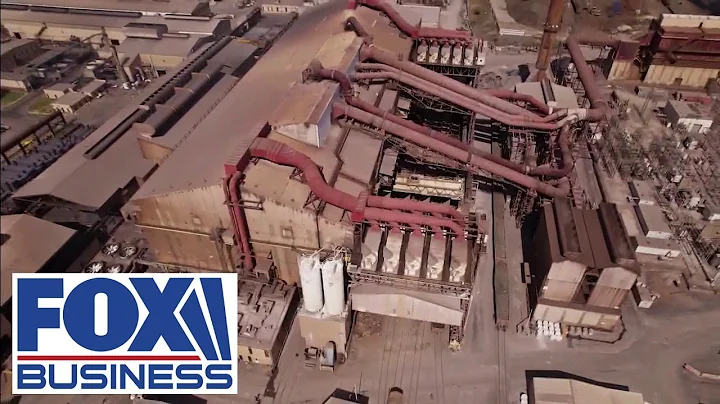Steel Research Shenghua announced a disruptive titanium metal smelting process in 2018. It is difficult to say whether the industrialization will be successful, but it is indeed a new smelting process with great imagination, compressing the process to the point where it can no longer be compressed.

Electrolysis device of new process
1 - power supply; 2 - cathode conductive crucible ; 3 - anode conductive crucible; 4 - sodium ion conductive crucible; 5 - TiCl4 connecting pipe
working principle
1, anode room, anode room NaCl molten salt occurs The oxidation reaction generates Cl2 and Na+, and the titanium oxide, carbonaceous reducing agent and the generated Cl2 undergo a carbothermal chlorination reaction to generate TiCl4. ( compresses the boiling chlorination process into the anode crucible )
2, generates TiCl4 and passes NaCl molten salt into the cathode chamber, Na+ directionally migrates to the cathode chamber through the sodium ion conduction crucible; ( principle is like a sodium ion battery The sodium ions pass through the solid electrolyte separator )
3 and the pole chamber, Na+ is reduced to form metallic sodium, which is dissolved in the NaCl molten salt in the cathode chamber. TiCl4 reacts with metallic sodium to generate metallic titanium and NaCl molten salt ( Hunter Sodium is reduced and compressed into the cathode crucible )
Reaction in the anode crucible:
1, 2NaCl - 2e=2Na+ + Cl2
2, TiO2+2Cl2+2C=2CO+TiCl4
The generated TiCl4 and CO mixed gas is condensed and separated to obtain TiCl4, and then Pressurize NaCl molten salt into the cathode chamber. The generated Na+ migrates directionally to the cathode chamber through the sodium ion conductive membrane.
Reactions in the cathode crucible:
1, Na++e=Na
2, 4Na+TiCl4=4NaCl+Ti
Total reaction: TiO2+C=Ti+CO
Key process parameters :
1, The molten pool temperature of molten salt can be Controlling it at 810~950°C not only ensures that the NaCl molten salt in the anode chamber can be completely melted and has fluidity, but also avoids the sintering reaction of the sodium ion conductive crucible that affects the conductivity.
2. In order to reduce the melting temperature of the NaCl molten salt in the anode chamber, MClx can be added to the above-mentioned NaCl molten salt in the anode chamber. M is K, Mg or Ca, x is 1 or 2. MClx can act as an auxiliary flux, thereby reducing the The melting temperature of NaCl molten salt
3. In order to ensure that the carbonaceous reducing agent and TiO2 can fully react and increase, and the carbonaceous reducing agent is appropriately excessive, the mass ratio of the carbonaceous reducing agent and TiO2 can be 1 to 2:5
4. Electrolysis The voltage can be 3.5~4.5V, the electrolysis time (i.e. one reaction cycle) can be 2~4h, and the titanium metal obtained after one reaction cycle can be cooled to normal temperature
5, the material of the sodium ion conduction crucible 4 is NASICON, sodium ultra Ionic conductor, the molecular formula is Na3Zr2Si2PO12
6, the cathode conductive crucible 2 and the anode conductive crucible 3 can be graphite or other conductive metal crucibles
Advantages:
Compared with the existing technology, the preparation method of titanium metal provided by the present invention adopts a two-step method To prepare titanium metal, Cl2 is electrolytically produced in the anode chamber, and a carbothermal chlorination reaction of titanium oxide is performed. Na+ ions are reduced to metallic sodium through directional migration to the cathode chamber, and are dissolved in the cathode molten pool to reduce TiCl4 to prepare titanium metal. The electrolyte NaCl is not consumed during the entire process. It is a recycling process and can be considered as the reaction medium. Since the anode chamber reactant titanium oxide and the cathode chamber reactant TiCl4 do not participate in the electrolysis process, the limitation of solubility is eliminated. At the same time, because the electrolysis reaction is selective, the limitation of electrolysis voltage is eliminated and the current efficiency is improved. At the same time, the above-mentioned preparation method of titanium metal introduces a sodium ion conductive crucible membrane to achieve directional migration of Na+, limiting the occurrence of electrolysis side reactions, and can also improve the current efficiency and the selection range of electrolysis voltage.
The chlorination rate of titanium oxide in the anode area is higher than 85%, the reduction rate of titanium in the cathode area is higher than 90%, and the oxygen content in metallic titanium is less than 0.005%
Thoughts:
Comrades, just have fun and open your imagination. , don’t take it seriously!





















